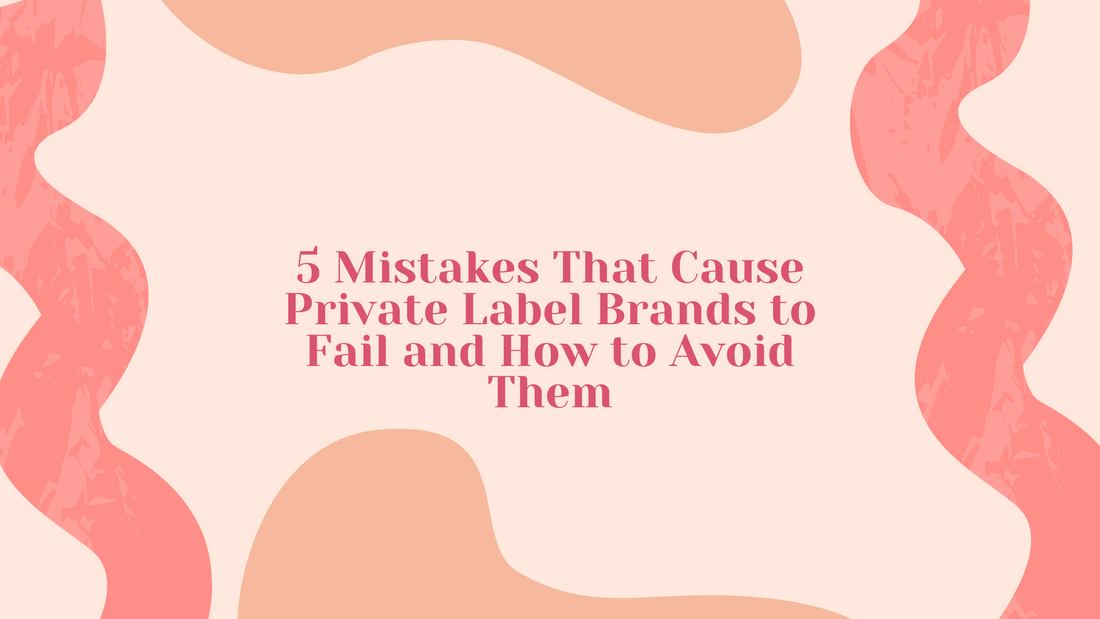Introduction: Why Do Private Label Brands Fail and What Makes a Successful One?
Private Label Brands are becoming the go-to solution for many companies looking to enter foreign markets. As a result, the number of private label brands has increased in recent years with each year translating into millions of dollars invested in developing and marketing these brands.
However, not all private labels are successful. As a matter of fact, a staggering percentage fail within four years.
So what makes a successful Private Label Brand?
A successful Private Label brand needs to overcome a few key hurdles:
1) Build trust with consumers - Establishing that shoppers can trust your brand starts from packaging quality and clarity of communication on the frontend but goes much deeper than that into product quality and customer service.
2) Develop clear positioning - Determining a distinct value proposition for your brand is crucial; this helps people understand what benefits they can get from buying your product over competitors' offerings as well as make it easier for you to communicate this value proposition to your customers effectively.
Mistake 1 - Ignoring the Competition
Competition is a natural part of the business world. It is important to know who your competitors are and how they can affect your business.
In order to understand how competition can effect your business, you need to know what type of competition you have. There are two types of competitors: direct and indirect. Direct competitors are those that offer the same products or services as you do, while indirect competitors are those that offer different products or services but still compete for the same customers.
When marketing a product, it's necessary to understand the strengths and weaknesses of your competitors in order to market properly. When you thoroughly analyze the competition, you will be able to identify where they are stronger than you and where they are weaker. You will also be able to identify possible opportunities for marketing your product more efficiently by focusing on what is different about it.
Mistake 2 - Choosing the Wrong Market Niche
Choosing the wrong market niche is a common mistake that many brands make. They should not just choose a niche because it sounds good or they have an interest in it. They should also consider the size of the market, competition, and how much money they are willing to spend on marketing.
Mistake 3 - Lack of Proper Planning & Researching
Research is an important part of any project. It helps you understand the market and the audience you are targeting. It also helps you find out what your competitors are doing and how they are doing it.
The research process can be divided into 5 steps:
- Defining the problem or need that needs to be solved
- Understanding the target audience
- Understanding the competition
- Defining a solution or product
- Creating a plan to execute on this solution or product
Mistake 4 - Under-pricing Their Products & Services
The pricing strategy for small businesses is not always easy. There are many factors that can affect the price of a product or service. One of the most important factors is the competition in the market. If there are many competitors in a market, then it will be difficult to set a high price because customers will have more options and they can easily switch to another provider.
Another factor that affects pricing is the quality of your product or service. If you offer a low quality product or service, then you should set a lower price because customers will not be willing to pay more for something that does not provide much value. On the other hand, if your product or service has high quality and it provides great value, then you should set a higher price so that customers are willing to pay more for it.
Mistake 5 - Poor Quality Products or Services
Poor quality products or services are a huge mistake. They can make your customers feel like they are not worth the investment.
It is important to take care of your customers and provide them with the best possible experience. The quality of your product or service should be top-notch, otherwise you will lose the trust of your customers.
Conclusion: Keys to a Successful Private Label Brand
The first key is understanding your customer. This can be difficult if you don't have access to all the data that they possess, but it's worth investing in market research to get as much data as you can. This will help you create products that they want and need. Next is making the quality of your product better than the competition. Find ways to differentiate yourself from them and make your products stand out on shelves because they're better than others in some way, like smelling better or being more affordable or luxurious than other brands on the shelf.
Lastly, find ways to promote yourself offline with your customers and promote yourself online with potential customers with Facebook ads or website banners and such that mention how great your company is or how great these products are.

